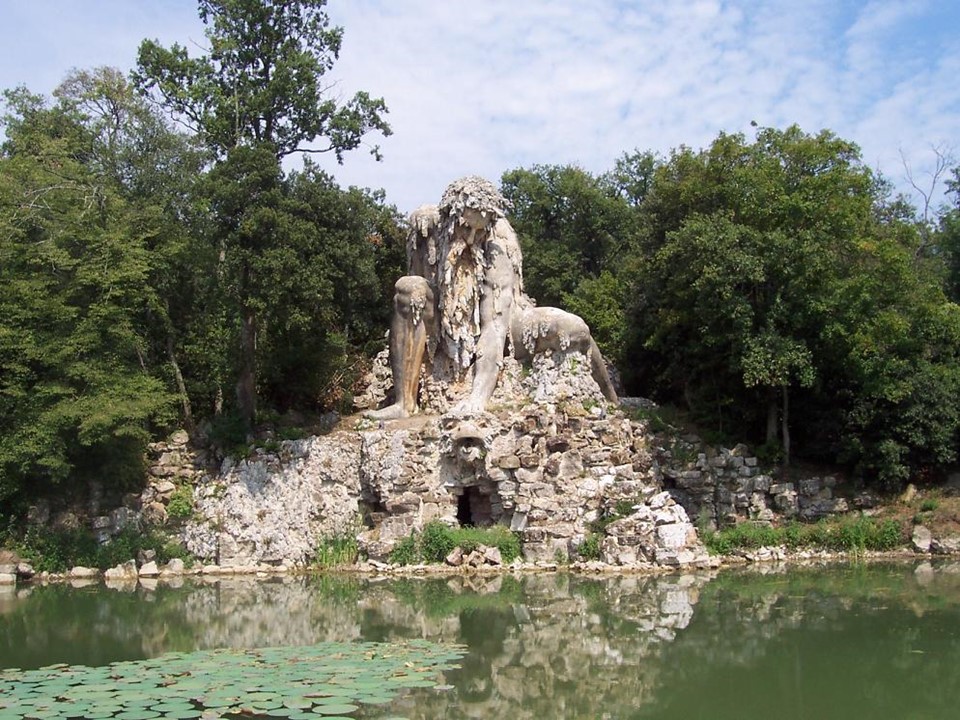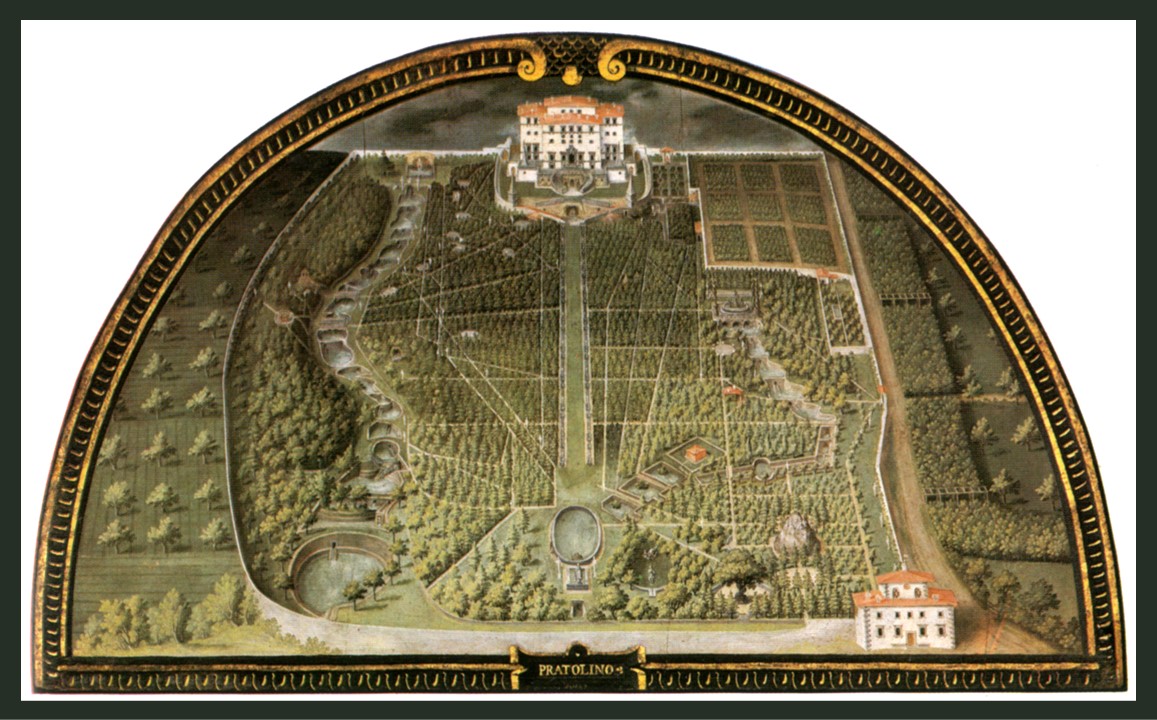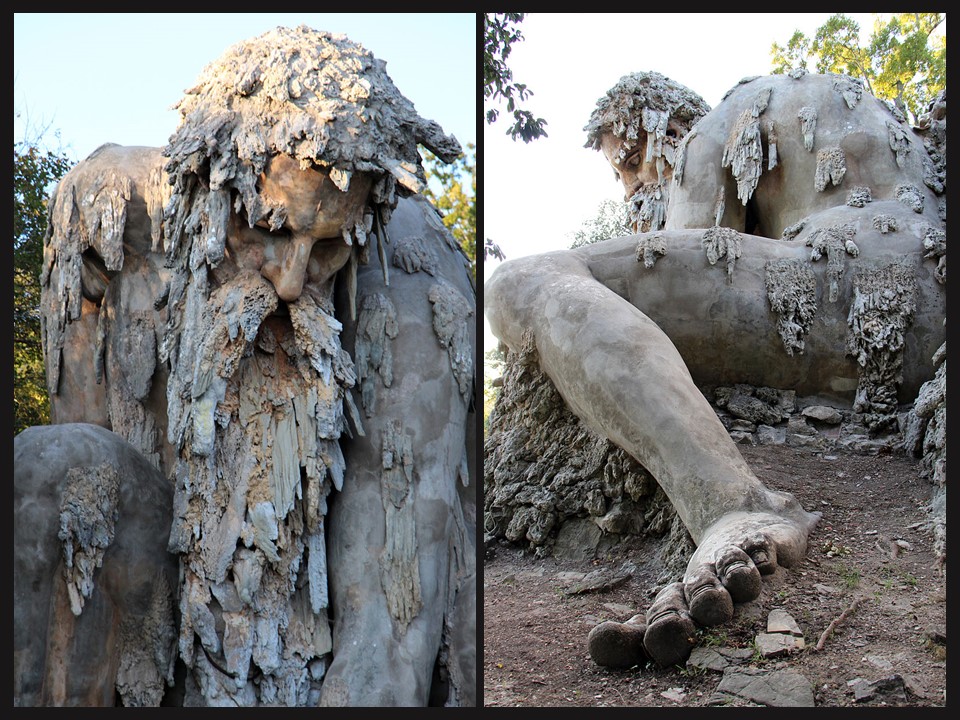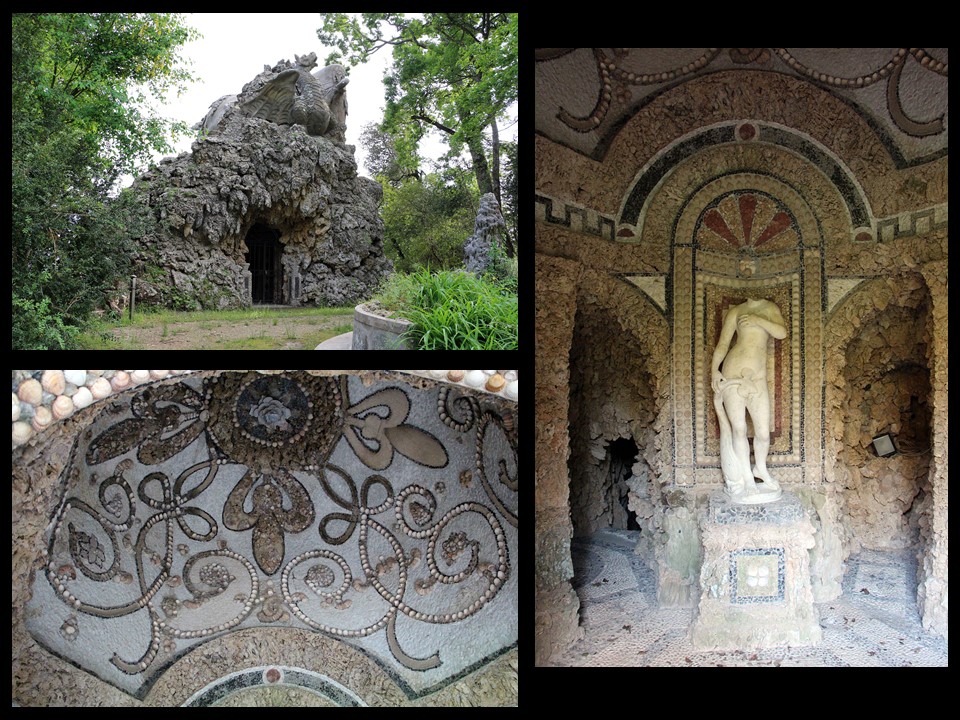
Colosso del’Appennino, 1570s, Rock, lava, brick, etc., H. 10 m, Garden of the Villa Medici, Park of Pratolino, Italy
https://commons.wikimedia.org/wiki/File:Demidoff_01.jpg
Introducing his book Ambitious Form: Giambologna, Ammanati, and Danti in Florence, Michal W. Cole refers to an October 1580 letter by the Urbinate Ambassador to Florence, Simone Fortuna, addressed to his employer, Francesco Maria II della Rovere, on a meeting he had had with Giambologna, the star artist of Grand Duke Francesco de’ Medici’s Florentine court. The Flemish sculptor, the ambassador wrote, was “the best person you could ever meet, not greedy in the least, as his absolute pennilessness shows. Everything he does is in the pursuit of glory, and he has ambition in the extreme to match Michelangelo. In the judgment of many, he has already done this, and they say that if he lives much longer he will overtake him. the Duke, too, is of this opinion.” This is a wonderful quotation to start my new BLOG POST, The Colosso del’Appenino by Giambologna. https://books.google.gr/books?id=gOo9DwAAQBAJ&pg=PA1&lpg=PA1&dq=Ambassador+Simone+Fortuna&source=bl&ots=HJTneuvYgR&sig=ACfU3U1NuLNaBnQxPDDmLEuHkFbr52HrEQ&hl=el&sa=X&ved=2ahUKEwjrgr6k7tXyAhWqgf0HHWlDBq0Q6AF6BAgUEAM#v=onepage&q=Ambassador%20Simone%20Fortuna&f=false

Villa di Pratolino, 1599-1602, one of the 14 surviving Lunette Paintings of Medici Villas, Gallery at Petraia Villa Medici, Italy
https://commons.wikimedia.org/wiki/File:Pratolino_utens.jpg
Villa di Pratolino, on the Florentine hills heading into the Mugello valley, was meant to be a dream Villa with a fairy-tale Garden, designed as a gift to Bianca Cappello, mistress, wife by 1579, of Francesco I de’ Medici, Grand Duke of Tuscany. Every artist involved in the process was a master. Bernardo Buontalenti, court architect, and engineer completed the construction of the Villa in 1581, and Giambologna, designed the Colosso del’Appennino, a monumental statue of a brooding, bearded man, personifying the Apennine Mountains or a great river god kneeling on a garden pond, respectful to the glory of the Medici.

Colosso del’Appennino (details), 1570s, Rock, lava, brick, etc., H. 10 m, Garden of the Villa Medici, Park of Pratolino, Italy
https://commons.wikimedia.org/wiki/Category:Appennino_by_Giambologna#/media/File:Parco_di_pratolino,_appennino_del_giambologna_06_(2).JPG
https://commons.wikimedia.org/wiki/Category:Appennino_by_Giambologna#/media/File:Parco_di_pratolino,_appennino_del_giambologna_10_(2).JPG
This epic colossal statue, half-man, half mountain, erected in the late 1570s, was originally placed within the niche of a local rock area that made it appear as if it was emerging from the surrounding landscape. Today, standing 10 m. tall, The Colosso del’Appennino by Giambologna still hides a wonderful secret, grottoes, passageways, and rooms with different functions that made this colossus come to life. The Colosso’s left hand, for example, holds spewed water from an underground stream, and it is rumored that space in his head was made for a fireplace which, when lit, would blow smoke out of his nostrils. Back in the 1570s, the statue was not standing alone. It was surrounded by other bronze statues, many of which have now gone lost or stolen. The Colosso, however, withstood centuries in the same spot, managing to maintain its figurative composition in all that time. A fitting testimony to Giambologna’s genius! https://www.boredpanda.com/appennino-sculpture-colossus-giambologna-florence-italy/?utm_source=google&utm_medium=organic&utm_campaign=organic and https://mymodernmet.com/giambologna-colosso-dell-appennino/

Colosso del’Appennino (Entrance-Interior View and Decoration), 1570s, Rock, lava, brick, etc., H. 10 m, Garden of the Villa Medici, Park of Pratolino, Italy
https://commons.wikimedia.org/wiki/Category:Appennino_by_Giambologna#/media/File:Parco_di_pratolino,_appennino_del_giambologna,_drago_del_foggini_01.JPG
https://commons.wikimedia.org/wiki/Category:Appennino_by_Giambologna#/media/File:Parco_di_pratolino,_appennino_del_giambologna,_grotta_superiore_04.JPG
https://commons.wikimedia.org/wiki/Category:Appennino_by_Giambologna#/media/File:Parco_di_pratolino,_appennino_del_giambologna,_grotta_superiore_02.JPG
Unfortunately, the Villa and the largest part of this amazing garden were destroyed in 1819 to make an easy to maintain “English garden”. Few parts survived including the Colosso del’Appennino, Cupid’s Grotto, a chapel, and a series of crayfish pools. In 1872 Villa di Pratolino and its gardens were sold to the Russian Prince Paolo II Demidoff, who renovated the Gardens, restored the buildings within the property, and enlarged one of the remaining outer structures into a villa that then took his name. In 1981, the Florence Province Council bought the property to turn it into a public park, known today as Villa Demidoff and Park of Pratolino. https://www.discovertuscany.com/mugello/pratolino-park.html
More on Giambologna, the great artist of the 16th century… http://www.travelingintuscany.com/art/giambologna.htm
On Bianca Cappello, and her extraordinary life… please go to my Teacher Curator Post: https://www.teachercurator.com/art/what-a-life-you-had-bianca-cappello/
For a PowerPoint on Giambologna’s work, please check HERE!